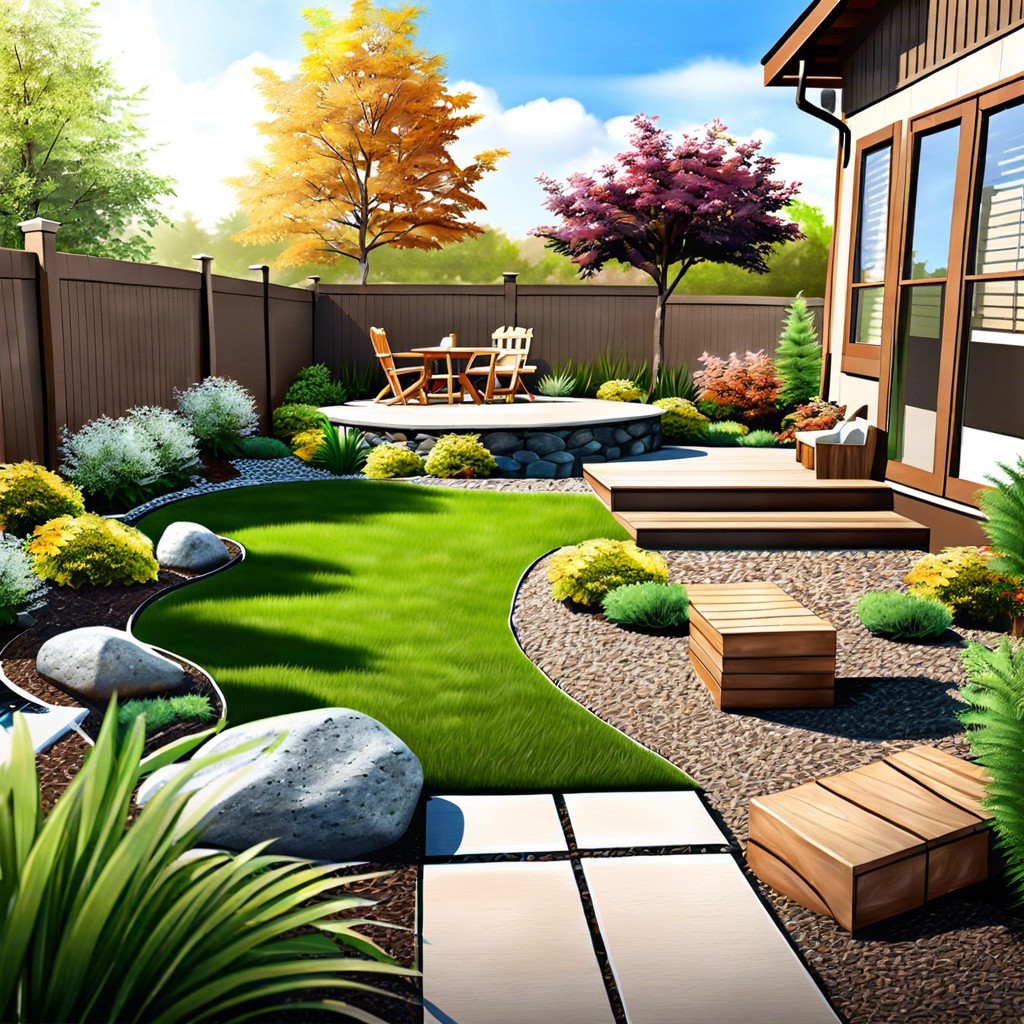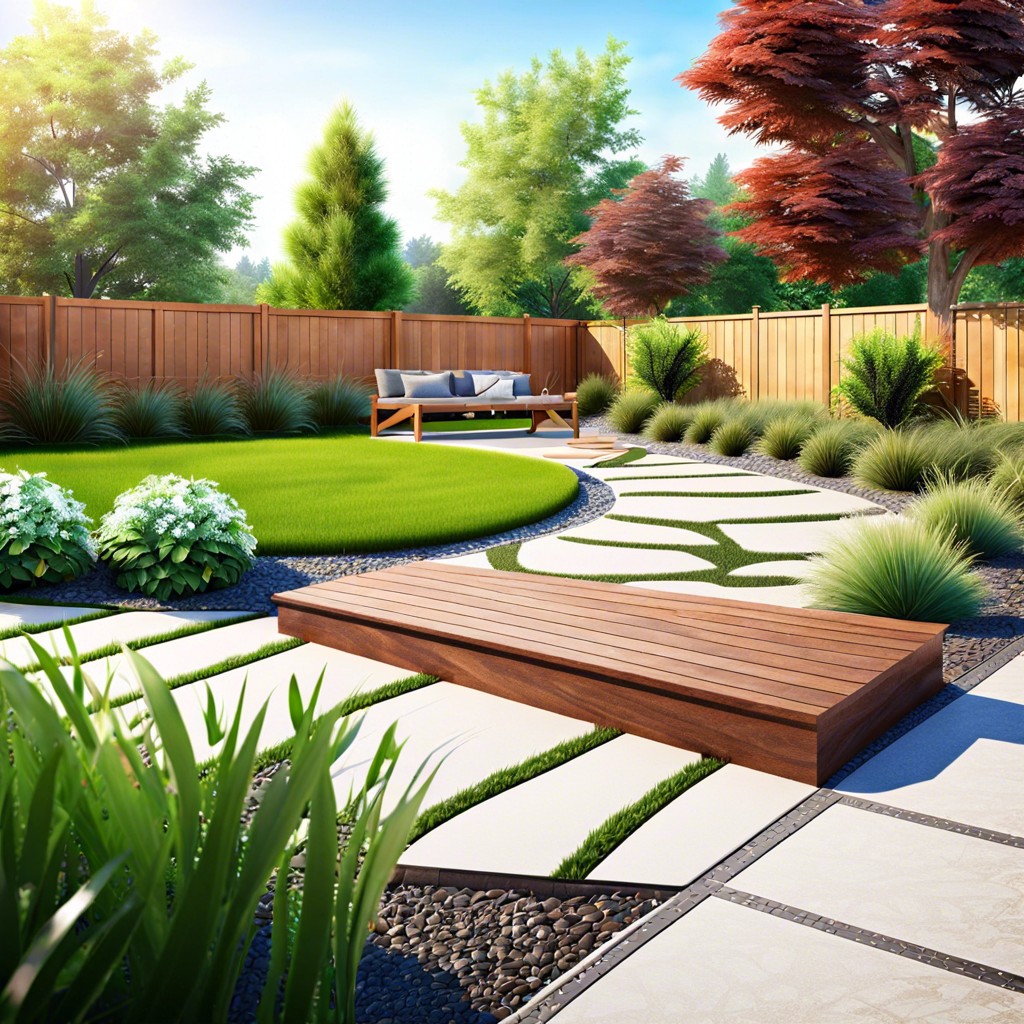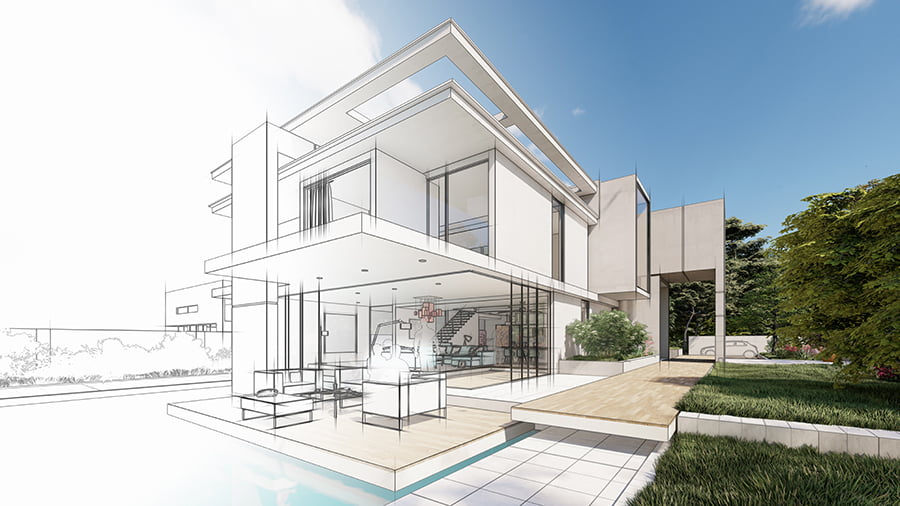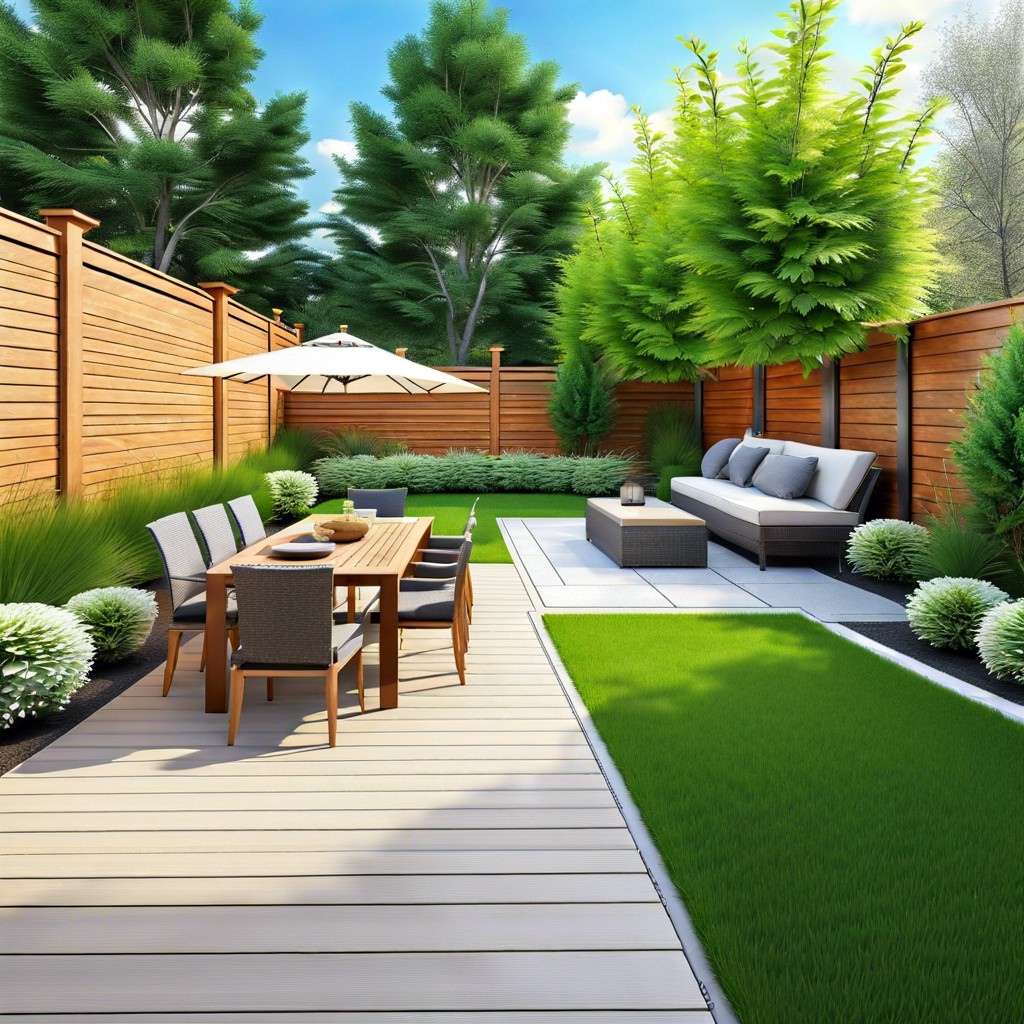In this article, you’ll learn about the various factors that influence landscaping costs, including design complexity, materials, and labor, helping you budget effectively for your next outdoor project.
Key takeaways:
- Materials, labor, design, equipment, permits, and maintenance influence landscaping costs.
- Factors that determine costs include size, complexity, plant choice, hardscaping, landscape condition, climate, and material availability.
- Average costs for complete landscaping overhaul range from ,000 to ,000.
- DIY saves on labor costs but requires skill for complex tasks, while professionals offer quality, efficiency, and design services.
- Lower costs by planning, using native plants, buying during the off-season, choosing mulch wisely, and phasing the project.
Landscaping Cost Breakdown

When planning your dream garden or outdoor space, understanding the different elements that contribute to the total cost of landscaping is crucial. Here’s a breakdown of various expenses you should consider:
Materials: This includes plants, soil, mulch, stones, and features like ponds or pathways. The quality and quantity of materials can significantly sway your budget.
Labor: If you’re hiring professionals, labor can be a major expense. Depending on the complexity of the project, labor costs can vary widely.
Design: A landscape architect or designer can transform your ideas into practical plans. Their expertise, however, comes with a fee that should be factored into your budget.
Equipment rental or purchase: For certain landscaping tasks, specialized equipment may be necessary. Renting or buying this equipment is an additional cost to consider.
Permits: Depending on the scope of your project and local regulations, you may need to secure permits, which can add to your costs.
Ongoing maintenance: Landscaping is not just an upfront cost. Maintenance, such as mowing, pruning, and seasonal care, should be included in your long-term budgeting.
By understanding these cost factors, you can better plan your landscaping project and allocate your budget accordingly. Always get multiple quotes and ensure all potential costs are considered before starting your project.
Factors That Determine Landscaping Costs
When considering a landscaping project, several key variables can significantly influence the final cost. Size is one of the primary determinants – larger spaces will typically require more materials and labor, driving up expenses. The complexity and customization of the design also play a crucial role; intricate patterns and unique features necessitate specialized skills and may increase the price tag.
The choice of plants is another factor that affects costs. Opting for rare or exotic species over common or native ones can lead to higher charges, not only for the plants themselves but also for their maintenance. Hardscaping elements like patios, walkways, or retaining walls require different materials and labor expertise, which can also add to the overall cost.
The current state of your landscape should be considered as well. If extensive clearing, grading, or soil treatment is needed before the actual landscaping can begin, this can add an additional layer of expense. Lastly, local climate and availability of materials can influence cost, with certain regions having higher priced materials due to transportation or scarcity.
Understanding these components is crucial when planning your budget, as they each contribute to the final landscaping expenditure.
Average Landscaping Costs in 2024
Understanding the average costs for landscaping in 2024 can help you budget for your project. Typically, homeowners can expect to spend between $5,000 and $15,000 for a complete landscaping overhaul of their garden or yard space. This range includes both materials and labor but varies greatly depending on the size of the area and the complexity of the design desired.
For basic services such as lawn care, prices may hover around $50 to $100 per visit, depending on your location and lawn size. When it comes to more advanced services such as planting a garden with a variety of flowers, shrubs, and trees, the costs could run from $3,000 to $10,000, considering design fees, plants, and labor.
Hardscaping, which includes non-plant elements such as patios, walkways, and retaining walls, is priced based on materials and labor intensity. For example, laying down a stone patio may cost anywhere between $15 and $50 per square foot.
It’s important to keep in mind that specialized designs and high-end materials will drive up costs. Organic materials, exotic plants, or features like waterfalls and lighting systems can further increase the expense. It’s always wise to consult with a professional to get a more detailed estimate tailored to your specific needs and local pricing trends.
Cost of DIY Vs. Professional Landscaping
Embarking on a landscaping project can be an exciting venture, whether you’re considering a DIY approach or hiring professionals. Each choice carries its distinct cost implications and benefits.
For the DIY enthusiast, the immediate advantage is apparent: saving on labor costs. You only need to purchase the necessary materials and plants. Moreover, tackling the project yourself allows for a flexible timeline, where you can work at your own pace and adjust the project as your budget allows.
However, it’s important to understand your own skill level. Complex landscaping tasks such as electrical work for outdoor lighting, installing irrigation systems, or laying paving stones might require expertise. Missteps in these areas can lead to costly mistakes that could outweigh the initial savings of a DIY approach.
On the other hand, hiring professionals comes with a higher upfront cost, covering both labor and materials. But investing in expert services often translates to quality and efficiency. Landscaping professionals can also offer design services, ensuring an aesthetically pleasing and cohesive outdoor space that enhances your home’s value. Plus, they typically guarantee their work, providing added assurance for the investment.
Balancing expenses and personal ability is crucial. While DIY may seem less expensive, professional services can save time and assure a polished result that withstands the test of time. Evaluate your project scope, budget, and skills to make an informed decision on which path best suits your landscaping needs.
Tips for Lowering Landscaping Costs
Embarking on a landscaping project can be as financially daunting as it is exciting. However, with a few strategic maneuvers, you can keep your wallet as green as your garden. Here are some practical tips:
Firstly, start with a plan. A clear, well-thought-out design from the outset can save you from costly mistakes and unnecessary purchases down the line. Resist the temptation to buy plants or materials without a blueprint – impulsive buys often don’t fit into the landscape and can lead to waste.
Consider native plants, which are typically low-maintenance and require less water and care. They’re tailor-made by nature for your local climate, so they’ll thrive with minimal intervention, reducing the long-term costs for upkeep.
Timing is key; purchase your plants during the off-season when nurseries are likely to discount their inventory. Fall is often a great time for planting and for finding deals. Plus, plants established in the cooler months require less water and have time to grow roots before the stress of summer heat.
Mulching is not just a finishing touch; it’s a cost-effective hero. It conserves water, reduces weed growth, and requires fewer replacements than lower-quality alternatives. Think of mulch as an investment into the health and longevity of your garden.
Last but not least, phased landscaping allows you to spread out the financial burden over time. You don’t have to overhaul your entire yard in one go. Prioritize the areas that need immediate attention and gradually build your dream landscape as funds allow.
With these cost-saving strategies, you’ll be well on your way to cultivating a beautiful space without digging a hole in your budget.




